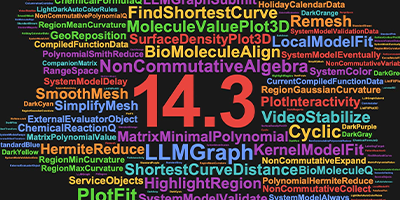Advancing Paleontology Research with Mathematica: Dinosaur Size
Just how big were the dinosaurs? Dr. Nathan Myhrvold recently published a paper challenging our mainstream understanding of these massive creatures’ size.

Using Mathematica, Dr. Myhrvold performed a method of analysis, called Monte Carlo simulation, on data provided from past studies. He performed the analysis originally to satisfy his own curiosity, but his findings ended up showing that there were a vast number of inconsistencies in the previously published research. In fact, today’s claims about how big dinosaurs grew to be may actually be less definitive than we originally thought—in some cases too large, and in others, too small.
The evidence for this new information is primarily due to the fact that hardly any recorded dinosaur specimens were actually fully grown—requiring analysts to rely purely on computational methods to make accurate projections of the data. There may also be issues with how dinosaur growth is measured—Dr. Myhrvold advises that measuring body mass, which is an indirect method, is less reliable than measuring bone growth, which is more direct.
Dr. Myhrvold’s research has been noted by The New York Times and poses new questions about the practices currently in place to gather, measure, and analyze paleontological data. In fact, more accurate analyses may even reveal previously unrecognized species lurking in the data.



Comments